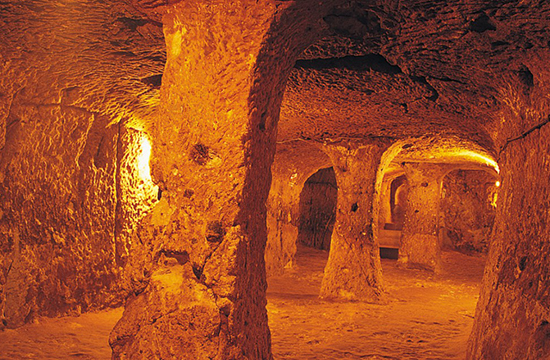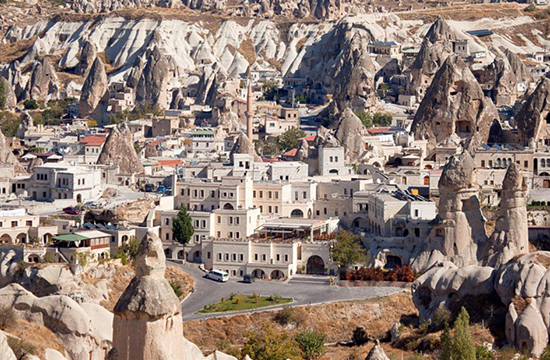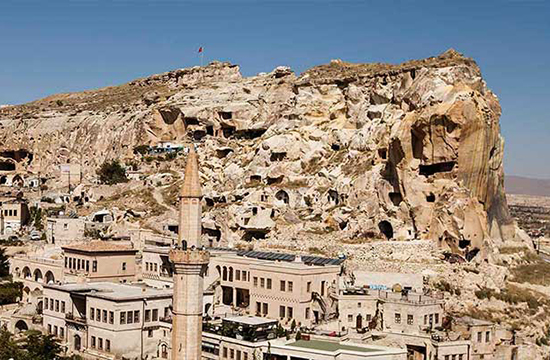GOREME |
GOREME
The old names of Göreme town are 'Matiana, Korama, Maccan and Avcılar. Since the name 'Korama' was first encountered in a 6th century document about Göreme, it is thought to be the oldest name. It has gained a worldwide reputation becauseof its numerous fairy chimneys. Cave churches from the Byzantine period, shelters carved into the rocks are the biggest feature of this place. Due to these reasons, its historical importance makes Göreme a tourist destination.
Especially from 7th to13th century Goreme became an important center of Christianity with the settlement of Christians who escaped from their oppression between centuries. This natural and cultural heritage, where the accumulation of centuries meet together with the fairy chimneys made of volcanic tuffs, is on the World Heritage List. "Korama, Matiana, Maccan and Avcılar" are the old names of Göreme. The name "Korama" was first encountered in a document of the 6th century about Göreme. In this document, it is mentioned that a saint named Hieron was born in Korama at the end of the 3rd century, was martyred in Malatya with his 30 friends, and his hand was cut off and brought to his mother, Korama. There is a fresco of Saint Hieron in Tokalı Church in Göreme Open Air Museum. It is thought that Göreme and its surroundings were used as a cemetery by the people of Venessa (Avanos) during the Roman period. The two-column Roman tomb carved into the large fairy chimney in the center of Göreme and many graves in the vicinity have revealed this view.
Göreme was an important religious center for Christians in the early Middle Ages, was an archbishopric center in the 11th and 13th centuries. As a matter of fact, there are many religious buildings in Göreme and its surroundings.
It exhibits an important period of Byzantine Church architecture and Christian history within the interesting landscape structure made of volcanic tuff. Due to the characteristics of the region, the people living here have managed to stay away from the effects of wars and the authority of the central administration.
Its distance from the main transportation roads and its rugged area has made it a suitable shelter for those who want to hide or retreat. The monastic life started in the late 3rd century and the beginning of the 4th century and spread rapidly. Monasteries, churches, chapels, dining halls and monks' cells, storage and wine-making places were carved and decorated with murals.






